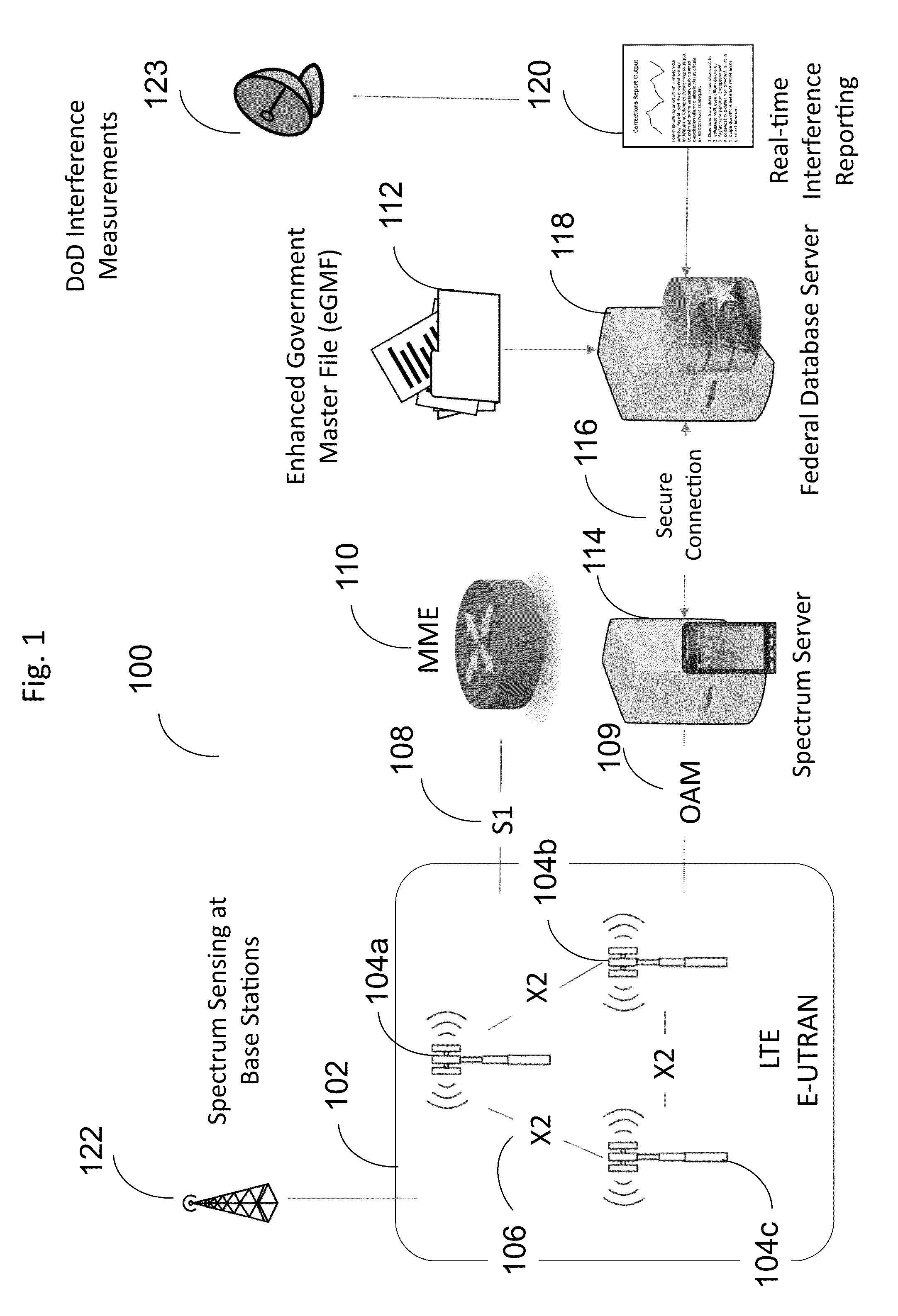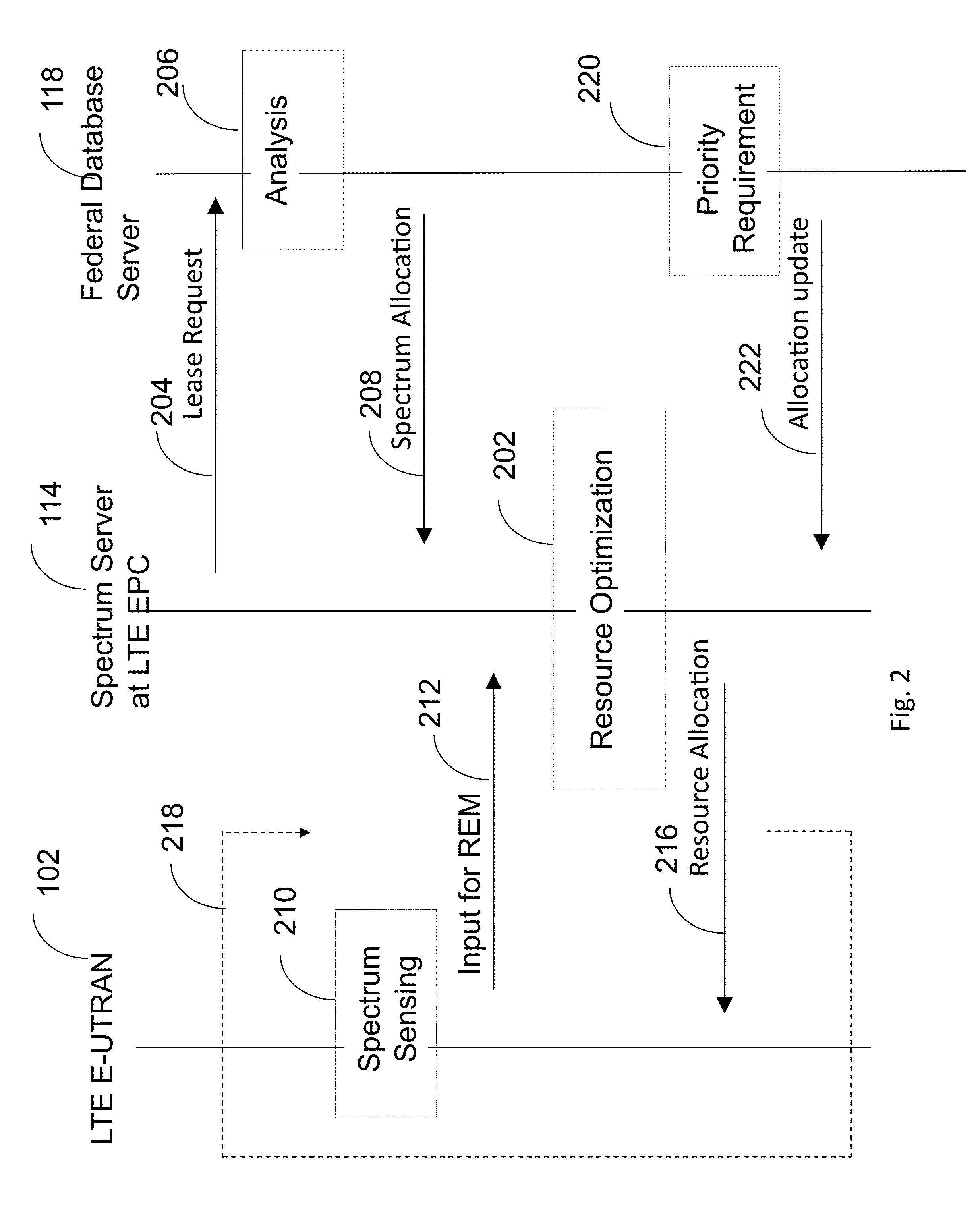System and method for heterogenous spectrum sharing between commercial cellular operators and legacy incumbent users in wireless networks
a wireless network and wireless communication technology, applied in the field of wireless communication spectrum sharing system and method, can solve the problems of data traffic demand, cellular network operators facing difficult challenges, and effectively grafting pre-emptible spectrum into a cellular network, and achieve the effects of maximizing network utility, reducing interference, and efficient space-time spectrum utilization
- Summary
- Abstract
- Description
- Claims
- Application Information
AI Technical Summary
Benefits of technology
Problems solved by technology
Method used
Image
Examples
Embodiment Construction
[0020]As an overview, the systems and methods described herein present an approach for enabling spectrum sharing between a government user and a commercial cellular operator. The main components of the system include the commercial radio access network, the commercial packet core, a spectrum server having interaction with a federal database server controlled by a government entity, and sensors that provide real-time spectrum sensing and interference monitoring. In general, a commercial network is able to make requests for additional spectrum resources to support the demands of end users. A spectrum server will make requests to a federal database server that has knowledge of the incumbent users provided from a master government file and knowledge of interference with respect to the incumbent users. In conjunction with the database knowledge, information regarding real-time spectrum sensing performed locally at commercial base stations is used to award spectrum resource allocation to ...
PUM
 Login to View More
Login to View More Abstract
Description
Claims
Application Information
 Login to View More
Login to View More - R&D
- Intellectual Property
- Life Sciences
- Materials
- Tech Scout
- Unparalleled Data Quality
- Higher Quality Content
- 60% Fewer Hallucinations
Browse by: Latest US Patents, China's latest patents, Technical Efficacy Thesaurus, Application Domain, Technology Topic, Popular Technical Reports.
© 2025 PatSnap. All rights reserved.Legal|Privacy policy|Modern Slavery Act Transparency Statement|Sitemap|About US| Contact US: help@patsnap.com



